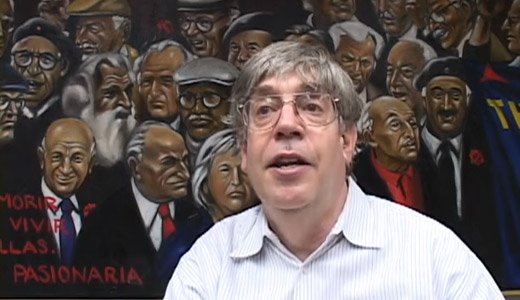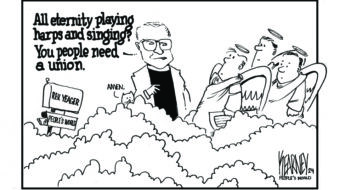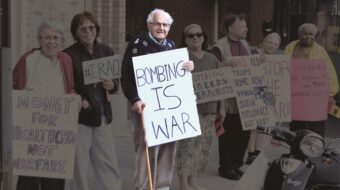
Michael Nash died suddenly on July 24 at age 65, from a pulmonary embolism. He was a close friend of mine for four decades, so it is with some sadness that I write this remembrance of his life and work, which continues in the work of New York University’s Tamiment Library and Robert F. Wagner Labor Archives, which he directed, and in and through all who knew him.
The son of New York City school teachers – his father a victim of the post World War II firings and blacklisting, his mother a trade union and political activist – Michael grew up in a world where the struggles and beliefs of labor and the left were valued.
He went to SUNY-Binghamton in the 1960s and then to Columbia University as a graduate student where he hoped to pursue his interest in labor history. But he found no one willing to work with him. He returned to Binghamton and did graduate work under the direction of the distinguished labor historian Mel Dubofsky. But there were few jobs available in labor history in the early 1970s. He then received a Masters in Library Science at Columbia University before completing his dissertation in labor history and took a position as an archivist in the New York Public Library, where I first met him.
Michael had the knack of getting along with a wide variety of people across both the political and personality spectrums. He sought to advance the study of working class culture and society in all of the jobs he took. In 1980 he and his wife Jeanne, a therapist with similar interests in politics and culture, went to Ithaca, N.Y., where he took a position in the library of Cornell’s School of Industrial and Labor Relations. When funding ran out in 1982, he took a position at the library of the Hagley Museum in Wilmington, Delaware. Michael was perhaps an odd choice to work in what was a business library supported by the Duponts, but over the next 20 years, working with historian Glenn Porter, he broadened the scope of the library’s collections and increased its larger social value.
Michael was able to make the best of bad times and bad presidents. He became an archivist during the Nixon administration, went to the Hagley Museum and Library in 1982 under Reagan, and then in 2002 got what his wife Jeanne called the dream job of his life, the directorship of the Tamiment Library at New York University. Tamiment had long been perhaps the leading archive of material specifically related to labor and the left in the U.S., but Michael brought new dimensions to its work.
First he advanced its holdings and its publicizing of working class culture, including the culture and struggles of minorities and women in the U.S. He also broadened its international involvement, courageously traveling to Cuba with Jeanne to acquire valuable sources from the estate of the late Philip Agee, exiled CIA whistleblower. He was a board member of the Abraham Lincoln Brigade Archives, whose papers are at the Tamiment Library.
Michael worked with Communist Party USA Chair Sam Webb and with People’s World editors to bring the CPUSA papers and huge pamphlet collections, and the People’s World’s vast collection of historic photos and other material from its predecessors the Daily Worker and Daily World, to the library and make them open to both scholars and the general public. (Tamiment will be showing an exhibition of photos from the Daily Worker, for example, beginning on September 4.)
The opening of this collection was a huge advance for scholarship (since one cannot understand the history of the labor movement and the broad left in the U.S. after World War I without understanding the central role of the CPUSA in all peoples; struggles). But it was also a victory against the crude anti-Communist ideology which both portrays the CPUSA as a secret conspiratorial organization and an organization of no positive importance in the history of labor and the left.
Michael was the author of Conflict and Accommodation: Coal Miners, Steel Workers and Socialism (1982) and co-editor of The Good Fight Continues: World War II Letters from the Abraham Lincoln Brigade (2006). He also wrote numerous articles, both as a labor historian and archivist. But Michael Nash was much more than a historian, an archivist, a teacher, an activist. He was all of these things and also my ideal of what administrators should be in a socialist society – practical, principled, humane, gaining the respect and affection of his coworkers while he worked to advance the common good. Shortly before he died, Michael was working with the Occupy Wall Street group in New York on the collection and preservation of their archival material and gently advising them on the need for organization and structure to advance their struggle.
There will be a tribute to Michael at the Tamiment Library at the end of September. But Michael Nash lives on both through everyone who knew him and through the ongoing work of the Tamiment Library. I urge readers to consult the Tamiment website for their exhibitions, talks, and resources. In my life, I can honestly say that I have not known anyone who so completely represented the best of both the personal and the political.
Photo: Michael Nash in front of a mural about the Spanish Civil War.












Comments